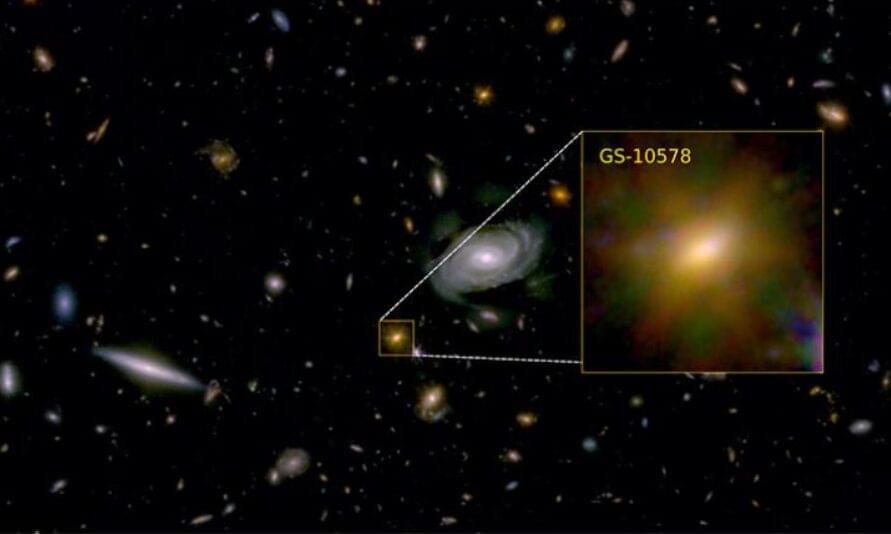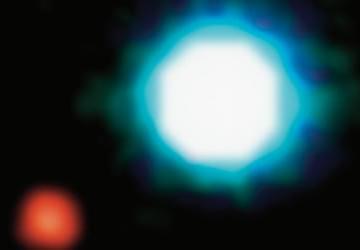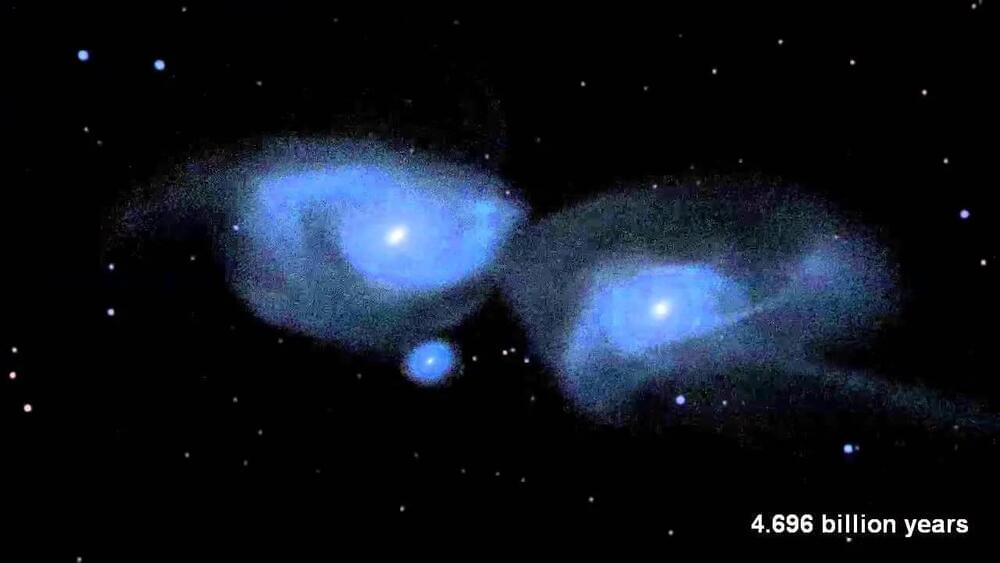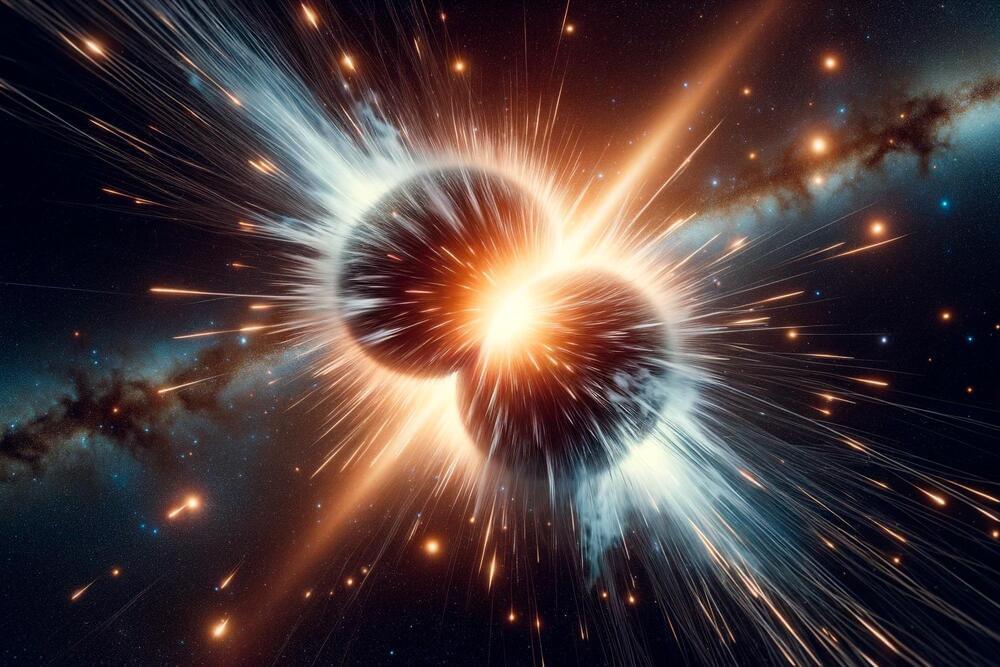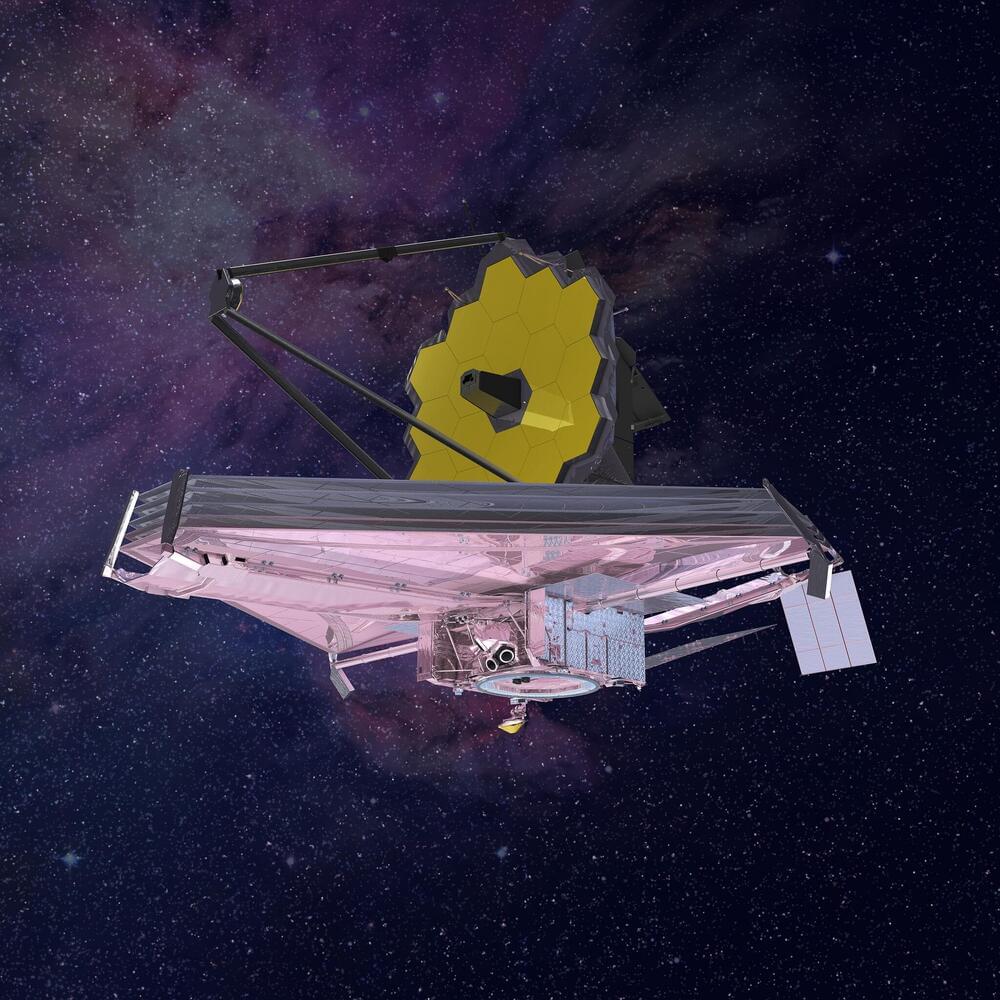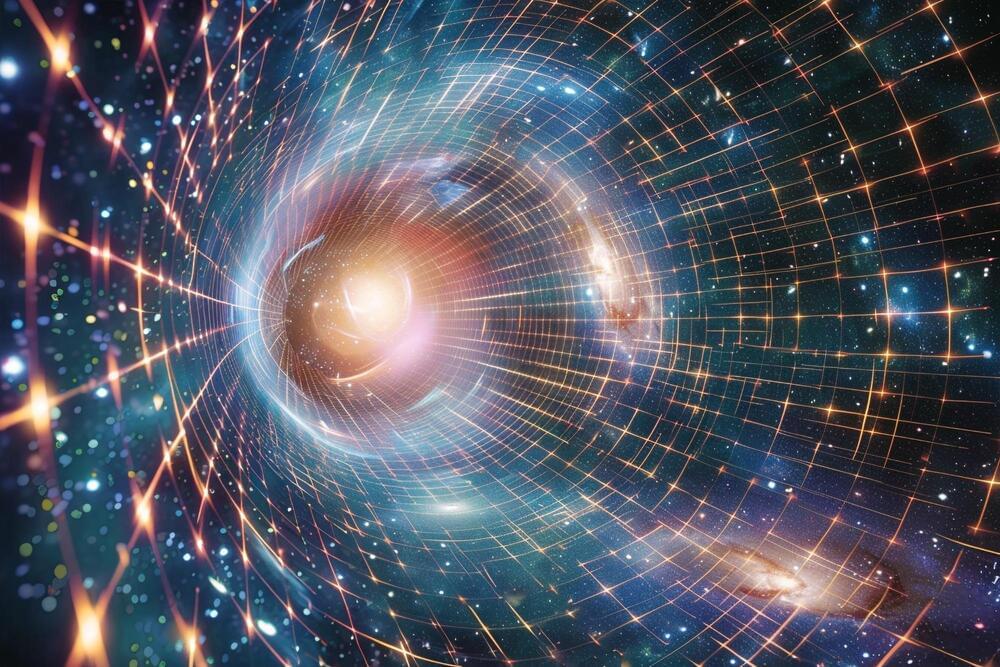Astronomers have used the NASA/ESA James Webb Space Telescope to confirm that supermassive black holes can starve their host galaxies of the fuel they need to form new stars. The results are reported in the journal Nature Astronomy.
The international team, co-led by the University of Cambridge, used Webb to observe a galaxy roughly the size of the Milky Way in the early universe, about two billion years after the Big Bang. Like most large galaxies, it has a supermassive black hole at its center. However, this galaxy is essentially ‘dead’: it has mostly stopped forming new stars.
“Based on earlier observations, we knew this galaxy was in a quenched state: it’s not forming many stars given its size, and we expect there is a link between the black hole and the end of star formation,” said co-lead author Dr. Francesco D’Eugenio from Cambridge’s Kavli Institute for Cosmology.
